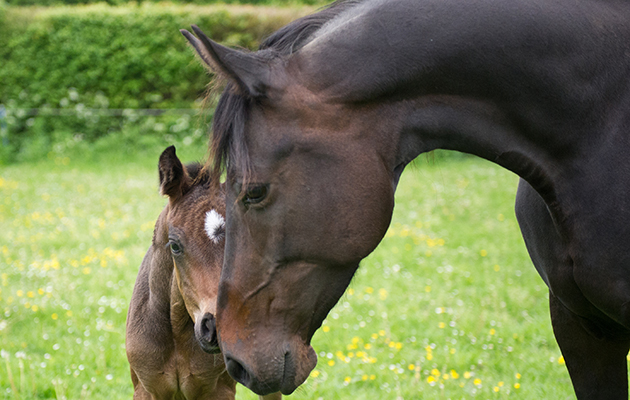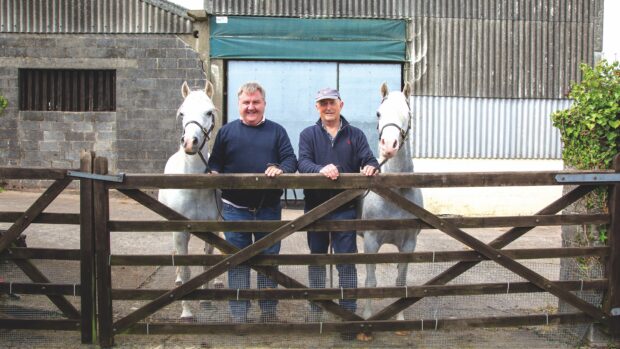Embryo transfer in horses is a type of assisted reproductive technology that has now become commonplace in equine breeding.
Embryo transfer (ET) is a means of surrogacy; it involves removing, or flushing, an embryo from the uterus of the biological dam, and implanting it into the uterus of a recipient mare, who will then carry the pregnancy to term.
Equine embryo transfer: the process
ET is used in conjunction with artificial insemination (AI), and the “donor” mare is inseminated with fresh, chilled or frozen semen. Six to eight days after ovulation, the embryo will be flushed from the mare’s uterus. this is a simple, non-surgical procedure, that involves flushing the uterus with a special fluid, which is then drained. The embryo is isolated and then transferred into the uterus of the recipient mare using a catheter inserted through the cervix.
A key aspect of ET is the synchronisation of the recipient mare. Ultrasound scanning and use of hormone injections/implants are used to ensure that she ovulates as close in time to the donor mare as possible, meaning her uterus will be ready to receive the embryo at the right time.
The recipient mare will be scanned around a week later to make sure she is pregnant, and she will then carry the pregnancy as normal. She will deliver the foal and nurse it until weaning.
What are the advantages of using embryo transfer?
ET was first developed in the 1970s, and its primary purpose in the early years was to enable the breeding of older mares, or those with problems carrying a foal to term.
These days, it is still used for older mares, but more commonly for breeding from high-quality competition mares, without interrupting their sporting schedule, and with the potential to obtain more than one foal per year from the same mare. It also enables quality mares who, for whatever reason cannot safely or successfully carry a foal, to pass on their genes.
What is the success rate of embryo transfer in horses?
The success rate of ET depends on many of the same factors that a normal pregnancy would, primarily the fertility of the stallion and dam, the quality of the semen and the timing of insemination. In young, healthy mares, and where the synchronisation and ET procedure itself has been expertly carried out, the typical embryo recovery rate is around 75-80%. Overall, ET typically has a success rate of around 60-65% per cycle. It is common for two or three cycles to be required before a successful pregnancy is achieved.
How much does embryo transfer cost?
The costs involved in ET vary and primarily depend on how many cycles are required, the type of semen that is used (fresh, chilled or frozen) and whether or not a recipient mare needs to be hired.
You can expect to pay anywhere between £275 and £450+ VAT per cycle for a veterinary AI package – using frozen semen usually costs more than fresh or chilled – plus a synchronisation fee of around £275+VAT, a flushing fee of around £290+VAT and a transfer fee of around £185+VAT. Two or more potential recipient mares are usually required, to maximise the chances of successful synchronisation.
If you need to hire a recipient mare, expect to pay £2000+VAT from conception until weaning.
Things like scans, examinations, semen fees and keep for the recipient mare also need to be factored in to the overall cost.
You might also be interested in:

How much does it cost to breed a horse?

12 stallions standing in Britain that breeders need on their radar

Breeding from older mares: is it a good idea and what are the best methods?

7 things you always wanted to know about breeding, but were too embarrassed to ask

Subscribe to Horse & Hound magazine today – and enjoy unlimited website access all year round
Horse & Hound magazine, out every Thursday, is packed with all the latest news and reports, as well as interviews, specials, nostalgia, vet and training advice. Find how you can enjoy the magazine delivered to your door every week, plus options to upgrade your subscription to access our online service that brings you breaking news and reports as well as other benefits.




